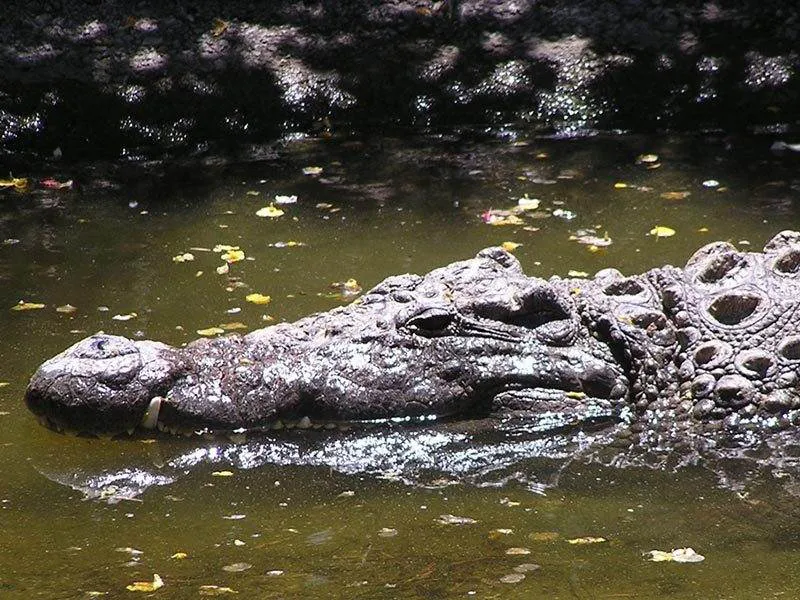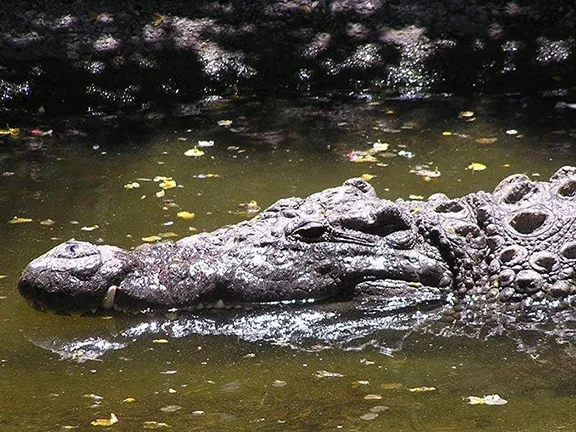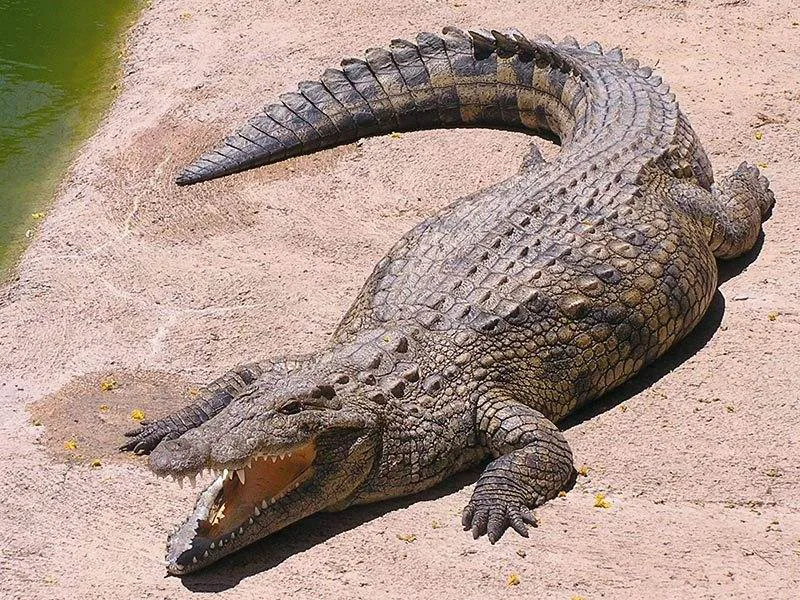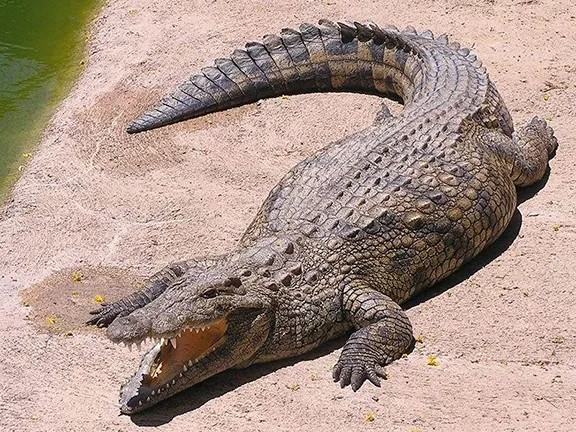Everything you wanted to know about crocodiles, alligators, caimans and gharials at the crocodile park at Torremolinos
By Nick Nutter | Updated 5 Oct 2022 | Málaga | Places To Go |
Login to add to YOUR Favourites or Read Later


Crocodile in the Water
Leaping into a pit containing five crocodiles is not something most people would consider as part of their job description even if three of them were less than 4 metres long. Grabbing the largest by the tail seems plain foolhardy, if not suicidal, especially with his four friends looking on. And twisting its tail is just asking for trouble. Or is it?


Crocodile basking in the Sun
The guide at the Crocodile Park at Torremolinos is a walking encyclopaedia about crocs and alligators. Apparently a crocodile would rather take to the water than be pestered on land. It was noticed that the guide did not go swimming. The Crocodile Park at Torremolinos has about 300 crocodiles including one weighing 600 kg and nearly 5 metres in length, the largest in Europe, touchingly called ‘Paco’. Most of the 22 strong crocodilian family are represented including 2 species that are alligators (one of which is the caiman group with 5 species) and 1 peculiar-looking gharial. The gharial is found in India and can easily be distinguished by the upraised bulbous nostrils on the end of its long, narrow jaw, not that you would ever want to get that close. At the park the different species occupy separate compounds, each with its own pond and islands on which the crocs spend much of their time basking in the sun. The warmer they are, the livelier they become, until it all gets too much and they take to the water to cool off. You will see some on land with their jaws wide apart displaying all their fearsome teeth. Like dog’s they have no sweat glands so can cool down a little by panting. Mentioning jaws, the muscles that open the jaws are very weak and, even in a full-grown male crocodile, if you grab him in time it is possible to clamp his jaws together, just like Crocodile Dundee. The muscles that close the jaws, however, are very strong with a bite force of 5,000 lbs per square inch, compared to a rottweiler with all of 335 psi, so it is best not to be between them.
Crocodiles are the most successful survivors of the dinosaur age, first appearing in the fossil record about 200 million years ago. In fact they are more closely related to dinosaurs and birds than to reptiles. When for whatever reason, the rest of the dinosaurs became extinct about 65 million years ago, the already established crocodile family quietly took to the waters and swamps and survived. They have changed very little since then. Nobody knows why they survived when most other reptiles died. Perhaps it was their capability of going without food for two years or their longevity, crocodiles can live for 130 years. In any case today we are lucky to be able to see these representatives from the age of dinosaurs. Crocodiles are very successful predators. They can move at 17 kilometres per hour for short bursts on land and almost as fast in the water. They have well-developed senses too, they can detect the smell of dead meat from a great distance and have good eyesight particularly the ability to spot prey on land whilst being submerged. Their scales have pores that are sensory, similar to a lateral line on a fish and some beneath the jaw are believed to excrete oil that flushes mud off the scales. They are also believed to be the most intelligent of the reptiles, rapidly learning to avoid hunter’s traps for instance and, unlike other reptiles, they have a cerebral cortex which is really scary. The cerebral cortex plays a role in memory, attention, perceptual awareness, thought and consciousness. Crocodiles also have four chambered hearts and a diaphragm. In other words crocodiles developed certain attributes without which we humans would not exist. It makes you think doesn’t it?
Following the informative tour, the guide is multilingual, the group assembles at the central rotunda where everybody is given the opportunity to cuddle a crocodile. In the interests of safety, these are baby crocodiles only a couple of feet long with their mouths taped shut, probably a good thing since crocodiles are entirely self-sufficient once they leave their egg. Despite that, crocodiles are good parents. If faced with danger the baby crocodiles all climb into their mother’s mouth. Nobody will argue with her since, apart from man, the crocodile has no predator.
The Crocodile Park is open from 10am each day. As well as crocodiles there is a small animal farm, a children’s playground, a cafeteria (crocodile steaks are not on the menu) and a shop. A crocodile museum includes some fairly horrific pictures of the aftermath of a crocodile attack and as much information as you are likely to want about the family Crocodylidae.
For opening times and prices of the Crocodile Park at Torremolinos, click here